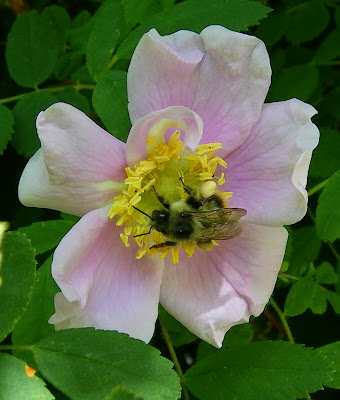I came to Green Lake to check on the
pied-billed grebe nest this morning and found no sign of
the baby that hatched yesterday.
But one of the remaining six eggs had a hole in it.

Soon enough, another hatchling arrived.

The adult's first response was the same as it had been for the first hatchling. It started chewing at a nearby water lily.

And back to the nest, to feed the baby and remove the eggshells. It carried the eggshells away from the nest, and dove with them.

After a while the baby became more lively and started peeping.

The other adult arrived and changed places with the parent who had been there at the hatching. The chick tried climbing on the adult's back. Check out those feet.

It proved quite difficult.

Still trying.

Ah, made it. The baby is now tucked under the grown-up's wings. I hope it stays safe.

















































